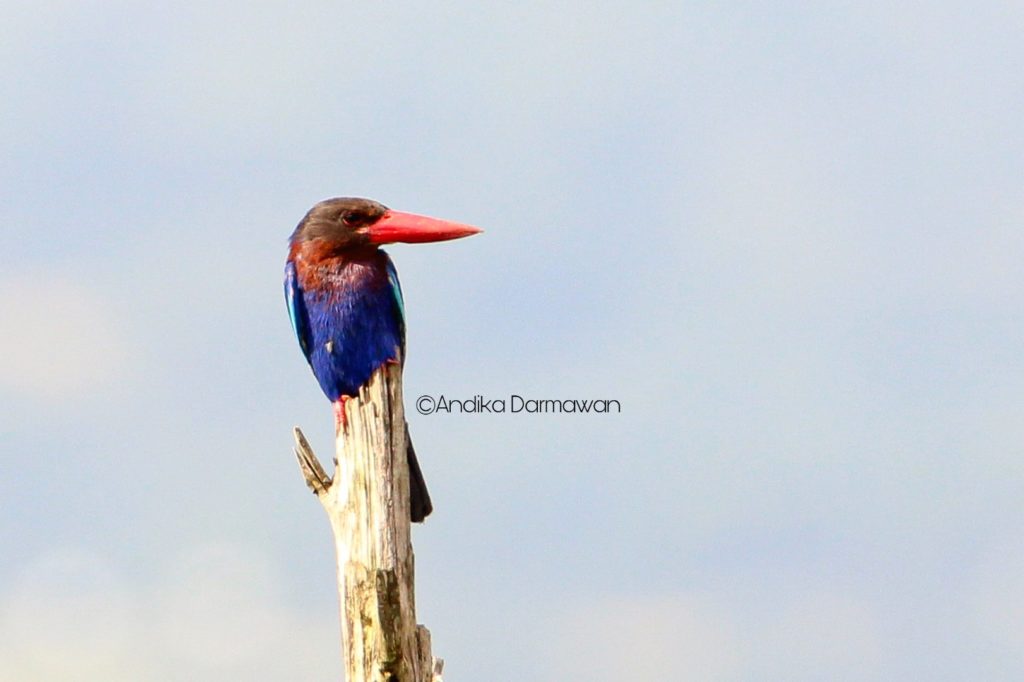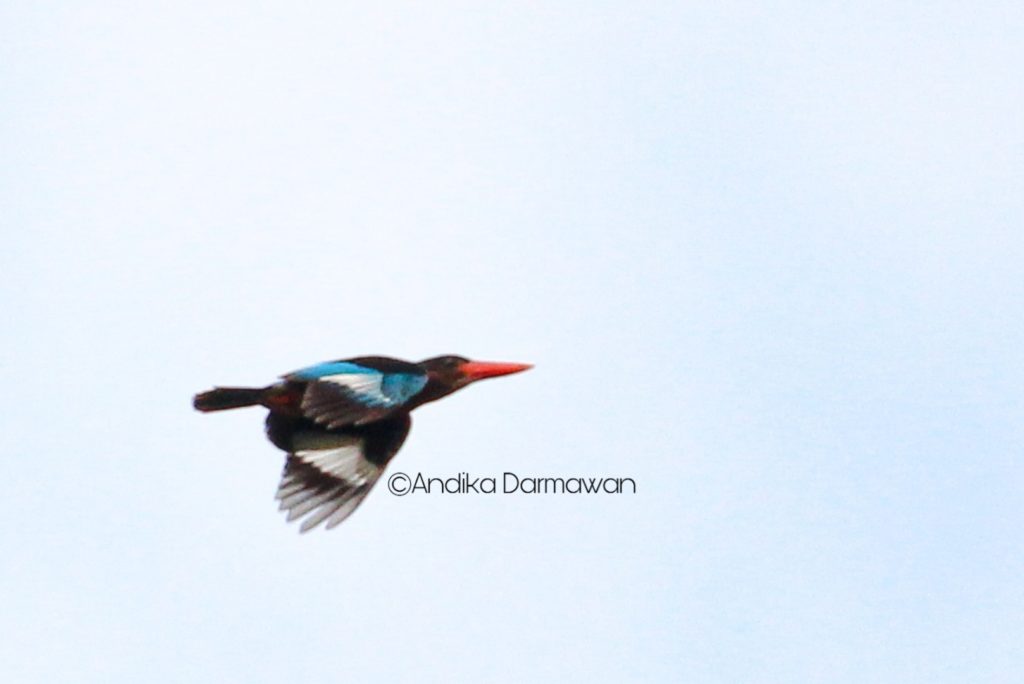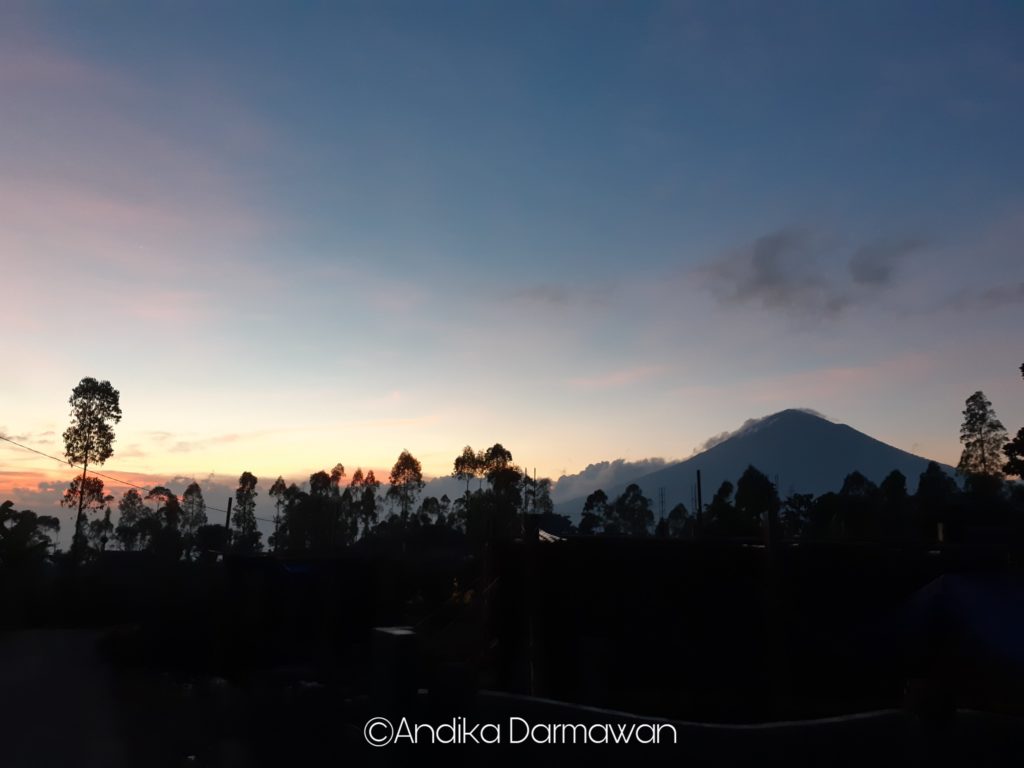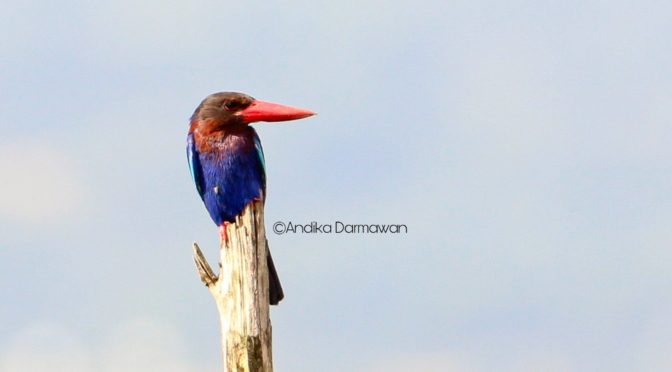Hello, it’s Andika here. I’m a student from Biology major in ITB and currently volunteering for the LFP Coffee Project. I do birdwatching and wildlife photography to know the bird diversity around coffee fields and their activity that can affect ecological processes like pest predation, flower pollination, and soil fertilization with bird droppings. The village of Cipaganti offers a great habitat for birds these days because it has lots of food sources, nesting sites, and conserved highlands climate. Birds that commonly found here are very rare around city edges, city parks, and forest parks like in Bandung. It’s a great experience to do birdwatching here!

Birdwatching
First I would like to explain what birdwatching is, and why I go out early in the morning and freeze out for an hour. Birdwatching is an activity to look out for bird presence, activity, and abundance (mainly). Some people do wildlife photography and some others just like to watch and enjoy the increasingly rare sights of these colorful and amazing creatures. Birdwatching is crucial these days to assess wild birds condition because nearly all of the species are declining due to global warming, poaching, and habitat degradation. Indonesia has a lot of beautiful birds and it’s such a pity if they go extinct and could only be found in pictures. By birdwatching we can know their status, so the scientific community, government, and society could take preventive measures. Collective data mining of bird’s presence, activity, and abundance will support the idea of full time and large scale bird monitoring around Indonesia. One more thing, birds are very vocal so they are easier to spot (well sometimes still difficult) than mammals, reptiles, amphibians, or insects.

Birds in Cipaganti
Cipaganti village is one of the last most suitable habitats for birds in Javan highlands in West Java. The food sources are abundant, high freshwater availability, remnant forest patches, and good patch connectivity with Papandayan nature reserve. Village roads offer a good track for birdwatching than forest area. It’s a great place to start birdwatching while training your wildlife photography skill because there are many birds and they often perch near roads you can easily access. One phenomenon that mesmerizes me is the quite high population of Javan kingfisher (Halcyon cyanoventris). This species is very difficult to spot due to the declining population and high sensitivity to human interaction. They have 20 m radius of “safe zone”, if you pay attention, make sounds, and literally look in the bird’s eye within the radius they will flee. In Bandung for comparison, I need to go 86 km to find this bird in Situ Patenggang, and only met once. Here in Cipaganti almost every morning and evening I can spot them. Most other birds also have this kind of phenomenon but this one blew my mind. Like there is still a place I can easily find them these days.

More soon
I will post some of the other species description and photo for the next post, I hope my “short” adventure can inspire all of you to look up to the skies. Believe it or not, they do give us many benefits from their presences. Thank you for reading, stay tuned! Andika Darmawan
References:
Aryanti, N. A., S. Maarif, A. Prabowo. (2017). Conservation Status of Birds around Argopura Mountain, Probolinggo. Prosiding Seminar Nasional III. Retrieved from research-report.umm.ac.id/index.php/research-report/article/download/1009/1363
BirdLife International 2016. Halcyon cyanoventris. The IUCN Red List of Threatened Species 2016: e.T22683252A92980601. http://dx.doi.org/10.2305/IUCN.UK.2016-3.RLTS.T22683252A92980601.en. Downloaded on 25 May 2019.
Global Warming and Birds. (2019, May 25). Retrieved from https://www.audubon.org/sites/default/files/documents/gwandbirds.pdf

